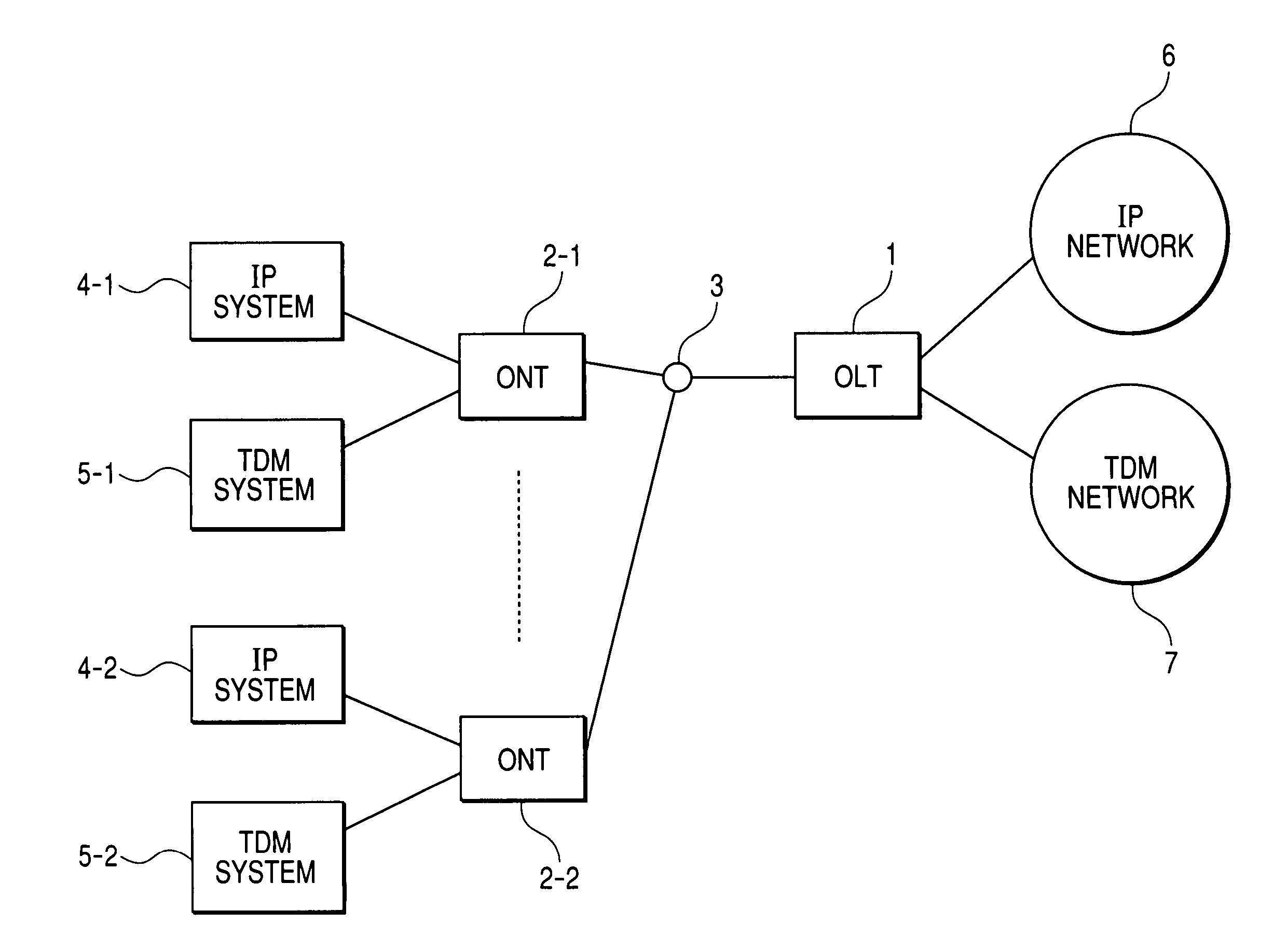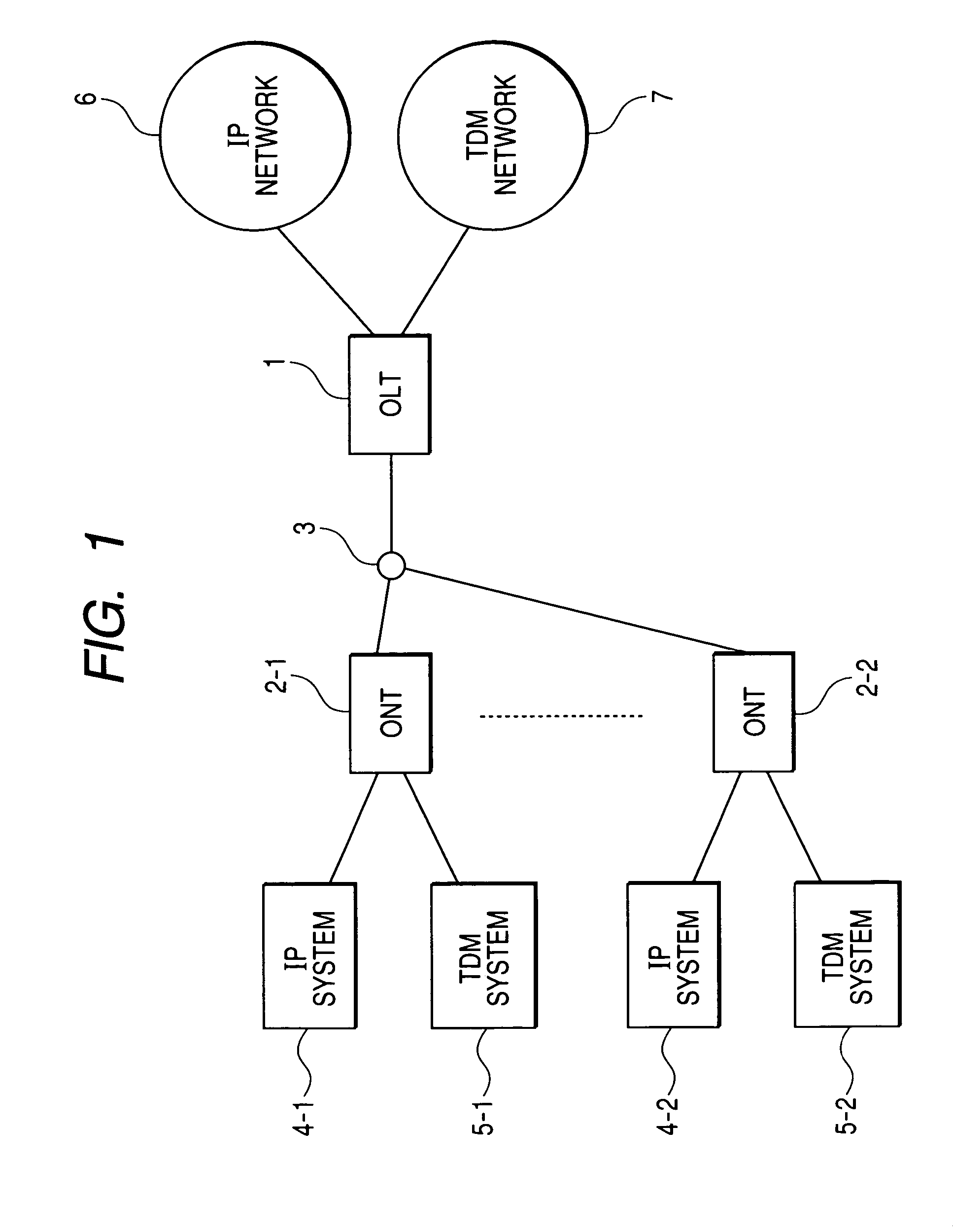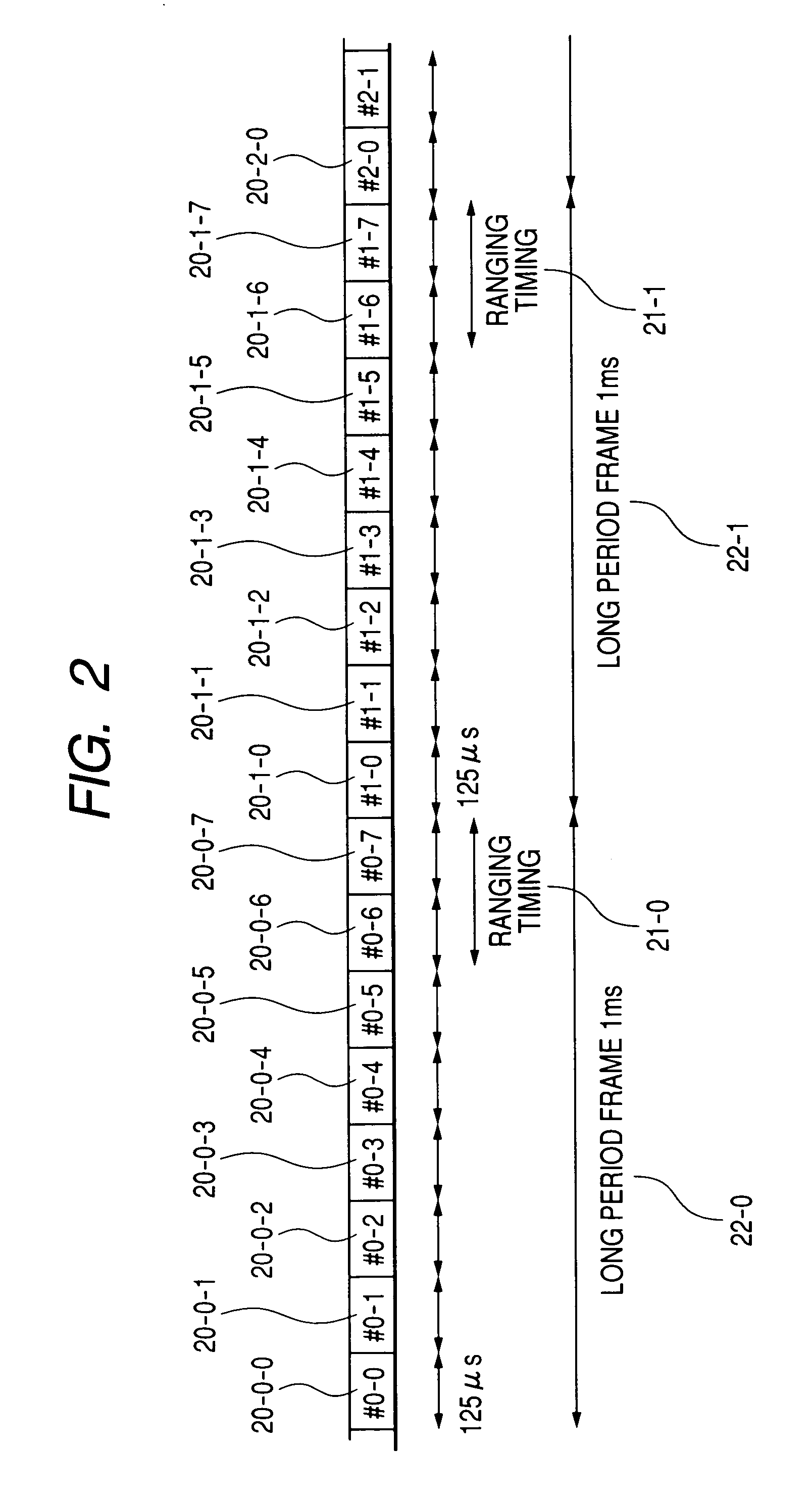Optical access system
a technology of optical access system and optical access system, which is applied in the field of optical access system, can solve the problems of signal loss, periodic signal communication becoming impossible, and the distance between the ont and the olt not always fixed
- Summary
- Abstract
- Description
- Claims
- Application Information
AI Technical Summary
Benefits of technology
Problems solved by technology
Method used
Image
Examples
Embodiment Construction
[0031]FIG. 1 is a drawing showing the first embodiment of the optical access network system of this invention. The optical access network system is configured between the OLT-1 and the ONT 2-1, ONT 2-2. The OLT connects to each ONT via a splitter 3. At least one among the ONT 2 is connected to the IP system 4 and the TDM system 5. The OLT connects to the IP network 6 and the TDM network 7. TDM signals from the TDM system 5 are stored into the TDM network 7 via the optical network. Signals from the IP system 4 are stored in the IP network 6 via the optical network.
[0032]The ranging is described next using FIG. 13. Ranging is a process for measuring the distance between the OLT and ONT in order to correct the phase of the upstream signal. Ranging starts from the OLT and is performed by immediately returning the signal at each ONT. The ranging window 152 is the time in which ranging is performed and during this time, communication interruptions occur. In this invention, time-division m...
PUM
 Login to View More
Login to View More Abstract
Description
Claims
Application Information
 Login to View More
Login to View More - R&D
- Intellectual Property
- Life Sciences
- Materials
- Tech Scout
- Unparalleled Data Quality
- Higher Quality Content
- 60% Fewer Hallucinations
Browse by: Latest US Patents, China's latest patents, Technical Efficacy Thesaurus, Application Domain, Technology Topic, Popular Technical Reports.
© 2025 PatSnap. All rights reserved.Legal|Privacy policy|Modern Slavery Act Transparency Statement|Sitemap|About US| Contact US: help@patsnap.com



